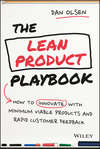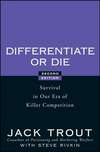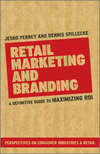Kitabı oku: «What You Do Is Who You Are», sayfa 4
WHAT HAPPENED TO LOUVERTURE?
The end of Louverture’s story is dismaying. After Louverture wrote his constitution in 1801, Napoleon became furious at this display of independence and decided to overthrow him. The following year, Louverture’s second in command, the fierce General Jean-Jacques Dessalines, coordinated a double cross with Napoleon’s top general in Saint-Domingue. Louverture was arrested at a diplomatic meeting and sent by ship to France, where he would spend the brief remainder of his days being badly treated in a French jail. He died of a stroke and pneumonia on April 7, 1803. Meanwhile, Napoleon began restoring slavery throughout the Caribbean. It was this, in great part, that led Dessalines to turn against Napoleon. He united all rebel factions under him, defeated Napoleon’s army, and declared independence in January 1804. He changed the country’s name to Haiti, and later that year had himself proclaimed emperor.
Dessalines completed the revolution that Louverture had spearheaded for so long, but he promptly made two decisions that Louverture would have abhorred: he ordered that most of the French whites in Haiti be put to death and he nationalized all private land, abruptly reversing much of the cultural and economic headway that Louverture had made. Though the French would eventually give Haiti diplomatic recognition in 1825, they would also exact cruel reparations for Dessalines’s shortsighted decisions, forcing Haiti to pay the modern equivalent of $21 billion for France’s loss of its slaves and plantations. These events continue to haunt the country, which remains the poorest in the Western world.
Sad story, but how could it happen? How could Louverture, genius of culture and human nature that he was, not perceive the brewing treachery? In a sense, he was like the Greek hero Oedipus, who solved the riddle of the Sphinx but who couldn’t clearly see those closest to him. Louverture’s optimistic view of human potential blinded him to certain home truths.
Because Louverture believed in the French Revolution and the freedoms it claimed to embody, he saw Napoleon as an enlightened product of the revolution rather than as the racist he was. In one outburst, Napoleon said: “I will not rest until I have torn the epaulettes off every nigger in the colonies.”
Because of Louverture’s loyalty to France, he didn’t declare independence when the French army invaded, which would have united the whole island behind him. He vacillated.
And because Louverture trusted—all too much—that his army would trust him to act for the best, he didn’t grasp that his soldiers were restless about everything from his position on agriculture to his constant efforts to attain a diplomatic solution with France, to his rule against revenge. Louverture did not grasp the emotional power of retribution, whereas Dessalines did.
C. L. R. James put it well: “If Dessalines could see so clearly and simply, it was because the ties that bound this uneducated soldier to French civilization were of the slenderest. He saw what was right under his nose so well because he saw no further. Louverture’s failure was the failure of enlightenment, not darkness.”
Yet though Louverture’s culture proved tragically difficult for his flawed subordinate to live up to, it had an enduring power. After Napoleon captured Louverture, he attempted to reinstitute slavery on the island—but was beaten by the army Louverture left behind. Though he was already dead, Louverture defeated his third European superpower. Napoleon suffered more losses in Saint-Domingue than he would at Waterloo, and these reverses forced him to sell Louisiana and parts of fourteen additional states to the United States for $15 million. The French emperor later confessed that he should have ruled the island through Louverture.
HISTORICAL IMPACT
The slave revolution of Saint-Domingue got into the area’s bloodstream and spread from island to island in the Caribbean. Later rebellions in Brazil, Colombia, Venezuela, Curacao, Guadeloupe, Puerto Rico, Cuba, and Louisiana were attributable, at least in part, to Haitian agents and their followers. These rebellions influenced the eventual withdrawal of the French, British, and Spanish empires from the region.
In the United States, Louverture inspired the abolitionist John Brown to launch the raid on the armory at Harpers Ferry, which Brown hoped would prompt the local slaves to rebel. The attack failed and Brown was hanged, but the Harpers Ferry raid escalated tensions that, a year later, led to the South’s secession and the Civil War.
While one of the greatest culture geniuses in history was unable to permanently establish the way of life he hoped for in his home country, he helped shift the Western world from a culture of slavery to one of freedom.
Toussaint Louverture made missteps that locked him up for life, yet he helped liberate us all.
2
TOUSSAINT LOUVERTURE APPLIED
I’m a murderer, n*gg*, but I don’t promote violence.
—Gucci Mane
The techniques Louverture used with rare ingenuity and skill work brilliantly at modern companies.
KEEP WHAT WORKS
When Steve Jobs returned to run Apple in 1997, the company was in bad shape. Really bad shape. Its market share had fallen from 13 percent when Jobs was fired in 1985 to percent, and it was only a quarter’s worth of cash from insolvency. When rival computer maker Michael Dell was asked what should be done with Apple, he said, “I’d shut it down and give the money back to the shareholders.”
Even within Apple, almost everyone believed the conventional wisdom that the company’s death spiral resulted from what was known as personal computer economics. The theory of PC economics held that because the industry had commoditized PC hardware—there were IBM knockoffs everywhere—the way to make money was not to be a vertically integrated provider that gave the user the machine and its operating system, but to focus on the horizontal option: selling an operating system to run on someone else’s hardware.
Nearly every analyst was pushing Apple to make its Mac OS operating system the company’s product. In 1997, Wired proclaimed: “Admit it. You’re out of the hardware game.” Even Apple’s cofounder, Steve Wozniak, subscribed to this view: “We had the most beautiful operating system,” he said, “but to get it you had to buy our hardware at twice the price. That was a mistake.”
Steve Jobs disregarded that advice. In fact, one of his first acts as CEO was to stop licensing Mac OS to other hardware providers.
The industry’s other article of faith was that companies needed to maximize market share by having a presence in every link of the computer chain, from servers to printers to PCs to laptops. Likewise, they needed to make PCs in all shapes and sizes for every possible user. But Jobs immediately killed the majority of Apple’s products, including most of its PC models, as well as all of its servers and printers and its Newton handheld computer.
Why? Jobs saw the situation entirely differently. At an early all-hands meeting he asked, “Okay, tell me what’s wrong with this place?” He answered his own question: “It’s the products!” He went on to inquire, “So what’s wrong with the products?” and to answer himself again: “The products suck!”
For Jobs, the issue was not the economic structure of the PC industry. Apple just needed to build better products. He would need to transform its culture to make that happen, but it would only happen if he built upon Apple’s strengths, not Microsoft’s.
Integrating hardware and software had always been Apple’s core strength. At its peak, the company had focused not on industry benchmarks like processor speeds and storage capacity, but on building products such as the MacIntosh that encouraged people’s creativity. Apple did integration better than anyone else. Part of the magic was its ability to control the entire product, from the user interface to the precise color of the hardware. Jobs went out of his way to keep the employees who understood this, user-experience perfectionists like him. Jobs said about one such employee, the great designer Jony Ive, “He understands what we do at our core better than anyone.”
The company’s famous Think Different advertising campaign, which launched in 1997, featured creative geniuses such as Gandhi, John Lennon, and Albert Einstein. Jobs explained: “We at Apple had forgotten who we were. One way to remember who you are is to remember who your heroes are.” For Apple to become great again, it had to build on the aspect of its culture that had distinguished it in the past.
Jobs narrowed the product line to ensure that the company focused on delivering great experiences to individual humans rather than an impersonal set of specs, feeds, and speeds aimed at no one in particular. Over time, he would expand to include iPods, iPads, and iPhones, but he never went “horizontal”—he kept the software and hardware integrated. To further control the customer experience, Jobs even opened Apple Stores, which would become one of the best-performing retail businesses in the world.
When Steve Jobs came back to Apple, it was ninety days from broke. As of this writing, it is the most valuable company in the world.
When Apple was an industry joke, it must have been tempting to purge the old culture entirely. Jobs’s predecessor, Gil Amelio, tried to do just that. But like Louverture, the former slave who preserved the best parts of slave culture within his army, Jobs, the former founder, knew that Apple’s original strengths should be the foundation of its new mission.
CREATE SHOCKING RULES
Here are the rules for writing a rule so powerful it sets the culture for many years:
It must be memorable. If people forget the rule, they forget the culture.
It must raise the question “Why?” Your rule should be so bizarre and shocking that everybody who hears it is compelled to ask, “Are you serious?”
Its cultural impact must be straightforward. The answer to the “Why?” must clearly explain the cultural concept.
People must encounter the rule almost daily. If your incredibly memorable rule applies only to situations people face once a year, it’s irrelevant.
When Tom Coughlin coached the New York Giants, from 2004 to 2015, the media went crazy over a shocking rule he set: If you are on time, you are late. He started every meeting five minutes early and fined players one thousand dollars if they were late. I mean on time. Wait, what?
At first, the “Coughlin Time” rule went over poorly. Several players filed grievances with the NFL and the New York Times wrote a scathing critique:
In the player-relations department, the reign of Giants Coach Tom Coughlin started poorly and is already showing signs of unraveling one game into the season.
On the heels of Sunday’s 31–17 loss to the Eagles, the N.F.L. Players Association confirmed that three Giants had filed a grievance against Coughlin for fining them for not being early enough for a meeting.
A few weeks ago, linebackers Carlos Emmons and Barrett Green and cornerback Terry Cousin, all free-agent acquisitions in the off-season, were fined $1,000 each after showing up several minutes early for a meeting, only to be told they needed to arrive earlier.
Coughlin’s response to the reporter didn’t make him seem more sympathetic, but it did solidify his rule: “Players ought to be there on time, period,” he said. “If they’re on time, they’re on time. Meetings start five minutes early.”
Was the rule memorable? Check. Did it beg the question “Why?” He had players asking everyone from the league to the New York Times “Why?” so, check. Did they encounter it daily? Yep, they ran into it every time they had to be somewhere. But what was he trying to achieve?
Eleven years and two Super Bowl wins later, backup quarterback Ryan Nassib explained the cultural intention to the Wall Street Journal:
Coughlin Time is more of a mindset, kind of a way for players to discipline themselves, making sure they’re on time, making sure they’re attentive and making sure they’re ready to work when it’s time to start meetings. It’s actually kind of nice because once you get out in the real world, you’re five minutes early to everything.
In business, creating partnerships that work is a difficult art. Success stories such as the partnership of Microsoft and Intel or of Siebel Systems and Accenture become legendary, but for every success there are a hundred failures. It’s difficult enough to align interests in your own organization, where everyone works for you, but doing it between companies is close to impossible.
In the 1980s, the business literature promoted the concept of win-win partnerships. Unfortunately, the idea was pretty abstract. How do you know if a deal is win-win? Can you actually determine when it’s fifty-fifty? The idea also failed to address the cultural adjustment required: if everything in a business culture is about winning, what behavior changes are necessary to achieve a win-win mindset? Finally, its meaning was easy to twist. Devious negotiators routinely said, “We want this to be a win-win.”
In 1998, Diane Greene cofounded a virtualized operating system company, VMware, whose success depended on her partnership strategy. But she was entering a field that had witnessed the biggest win-lose partnership ever—Microsoft winning total dominance by “partnering” with IBM on the desktop operating system. VMware’s potential partners would be extremely skeptical of any independent-operating-system company proposing a similar “win-win.”
So Greene came up with a shocking rule: Partnerships should be 49/51, with VMware getting the 49. Did she just tell her team to lose? That definitely begs the question “Why?”
Greene said, “I had to give our business development people permission to be good to the partners, because one-sided partnerships would not work.” Her rule was actually met not with resistance but with relief. Her people wanted to create mutually beneficial partnerships, and Greene’s rule gave them permission. It was of course no easier to measure an exact 49/51 split than a 50/50 “win-win,” but Greene’s employees understood her underlying point: “If you’re negotiating something on the margin, it’s okay to give it to our partner.” VMware went on to create a stunning set of partnerships with Intel, Dell, HP, and IBM that propelled the company to a market capitalization of more than $60 billion.
One of the most distinctive large-company cultures is Amazon’s. It promulgates its fourteen cultural values in a number of ways, but perhaps most effectively through a few shocking rules. One value, frugality, is defined as Accomplish more with less. Constraints breed resourcefulness, self-sufficiency, and invention. There are no extra points for growing head count, budget size, or fixed expenses.
That’s a nice definition, but how do you drive home that you mean it? Here’s how: desks at Amazon were built by buying cheap doors from Home Depot and nailing legs to them. These door desks weren’t great ergonomically, but when a shocked new employee asked why she had to work at a makeshift desk, the answer pinged back with illuminating consistency: “We look for every opportunity to save money so we can deliver the best products for the lowest cost.” (Amazon no longer gives everyone a door desk, as the culture has now been set—and as there are cheaper alternatives.)
Some of Amazon’s values are fairly abstract. Dive deep, for instance, encourages leaders to operate at all levels, stay connected to the details, audit frequently, and investigate more thoroughly when metrics and anecdotal evidence disagree.
Great idea—but how do you drive this kind of thoughtfulness into the culture? The shocking rule that helps is No PowerPoint presentations in meetings. In an industry where presentations rule the day, this rule definitely counts as shocking. To convene a meeting at Amazon, you must prepare a short written document explaining the issues to be discussed and your position on them. When the meeting begins everyone silently reads the document. Then the discussion starts, with everyone up to speed on a shared set of background information.
Amazon executive Ariel Kelman explains that the rule makes meetings much more efficient:
If you have to talk about something complicated, you want to load the data into people’s brains as quickly as possible so you can have an intelligent, facts-based conversation about the business decision you’re trying to make.
So, say you’re meeting to figure out pricing for a new product, you’ve got to talk about the cost structure, how much is fixed, how much is variable, and then there might be three different pricing models, each with pros and cons. That’s a lot of information. Now, you can sit and listen to someone pitch all of this information, but most people don’t have the patience to pay attention long enough to be effective in absorbing all of this data and it typically takes too much time. There’s been a lot of research done on this that shows that most people’s brains can absorb new information several times faster and more effectively by reading information versus listening to it. Also, asking people to present their plans in written format forces them to express their ideas with a deeper level of detail.
A culture is a set of actions. By requiring thoughtful action before every meeting, Amazon moves its culture in the right direction every day.
In the early days of Facebook, Mark Zuckerberg was keenly aware that the more people he got on his network, the better his product would be. As MySpace had far more users, Facebook had to outgrow them by building better software—software that had better features, was more user-friendly, and that excelled at identifying potential new Facebook users. Zuckerberg knew that he didn’t have much time: if MySpace got big enough, it might transform from an entertaining application into an invincible utility.
Speed was the number one virtue he needed, so he created a shocking rule: Move fast and break things. Imagine you are an engineer hearing that for the first time: Break things? I thought the point was to make things. Why is Mark telling us to break things? Well, he’s telling you so that when you come up with an innovative product and you are not sure whether it’s worth potentially destabilizing the code base to push the product along, you already have your answer. Moving fast is the virtue; breaking things is the acceptable by-product. Zuckerberg later observed that the reason the rule was so powerful was that it stated not only what Facebook wanted, but what it would give up to get it.
After Facebook caught and passed MySpace, it had new missions to pursue, such as turning the social network into a platform. At that point, the move fast virtue became more liability than asset. When outside developers tried to build applications on Facebook, the underlying platform kept breaking, which jeopardized the businesses of Facebook’s partners. So in 2014 Zuckerberg replaced his by-now-famous rule with the boring but stage-appropriate motto Move fast with stable infrastructure. Cultures must evolve with the mission.
When Marissa Mayer became CEO of Yahoo! in 2012, its reputation was of a company whose workforce didn’t give its all. She knew that to compete with her old company, Google, she would need a better effort from the team. She began by trying to lead by example, working relentlessly long hours. Yet she kept arriving at work to see an empty parking lot.
So in 2013, Mayer created a rule so shocking that it created massive backlash not only inside but even outside the company: during work hours, you must be at work. Nobody is allowed to work from home. But this was the technology industry—the industry that had invented the tools that enabled people to work from home! As the world exploded in anger, Mayer calmly explained her position. She had examined the virtual private networking logs of employees who were working from home; they had to use the VPN to securely access their work files. The logs showed that most people “working from home” had in fact not been working at all.
She shocked people because she had to make a dramatic cultural change. It’s worth nothing that while Mayer succeeded in building assiduousness back into Yahoo!’s culture, she never quite turned the company around. That’s the nature of culture—it helps you do what you are doing better, but it can’t fix your strategy or thwart a dominant competitor.
Ücretsiz ön izlemeyi tamamladınız.











